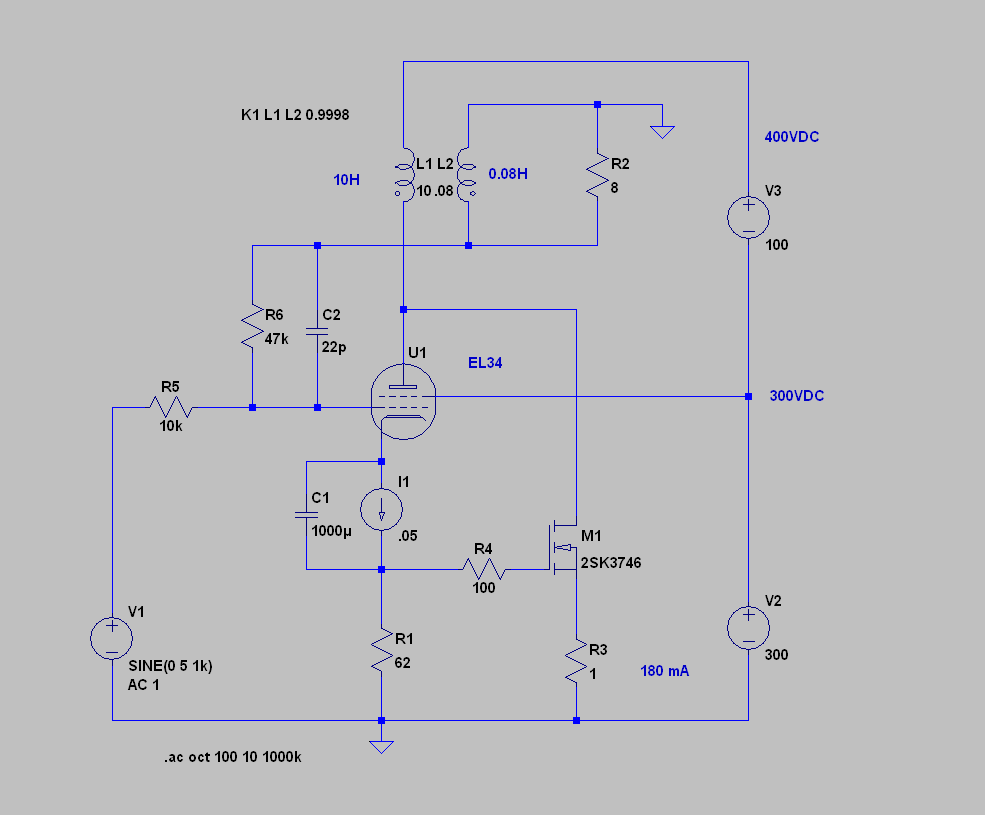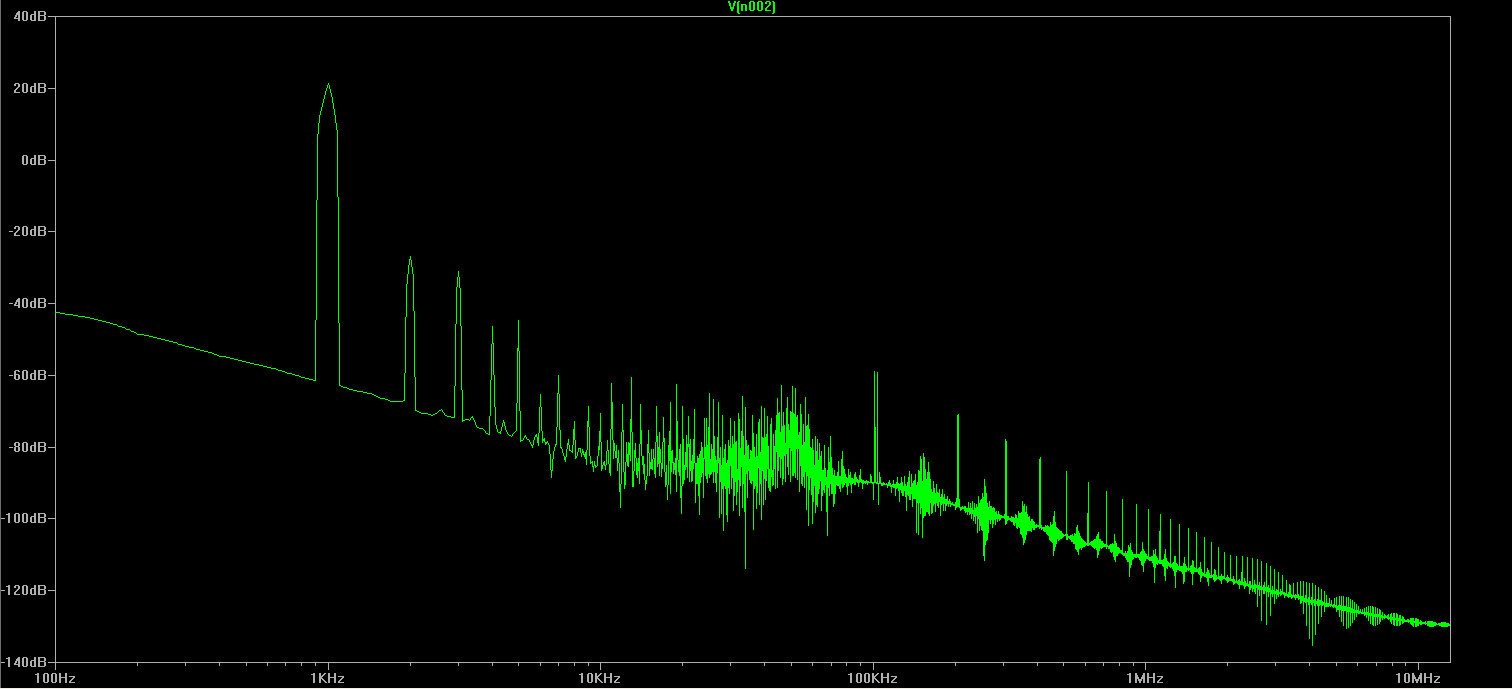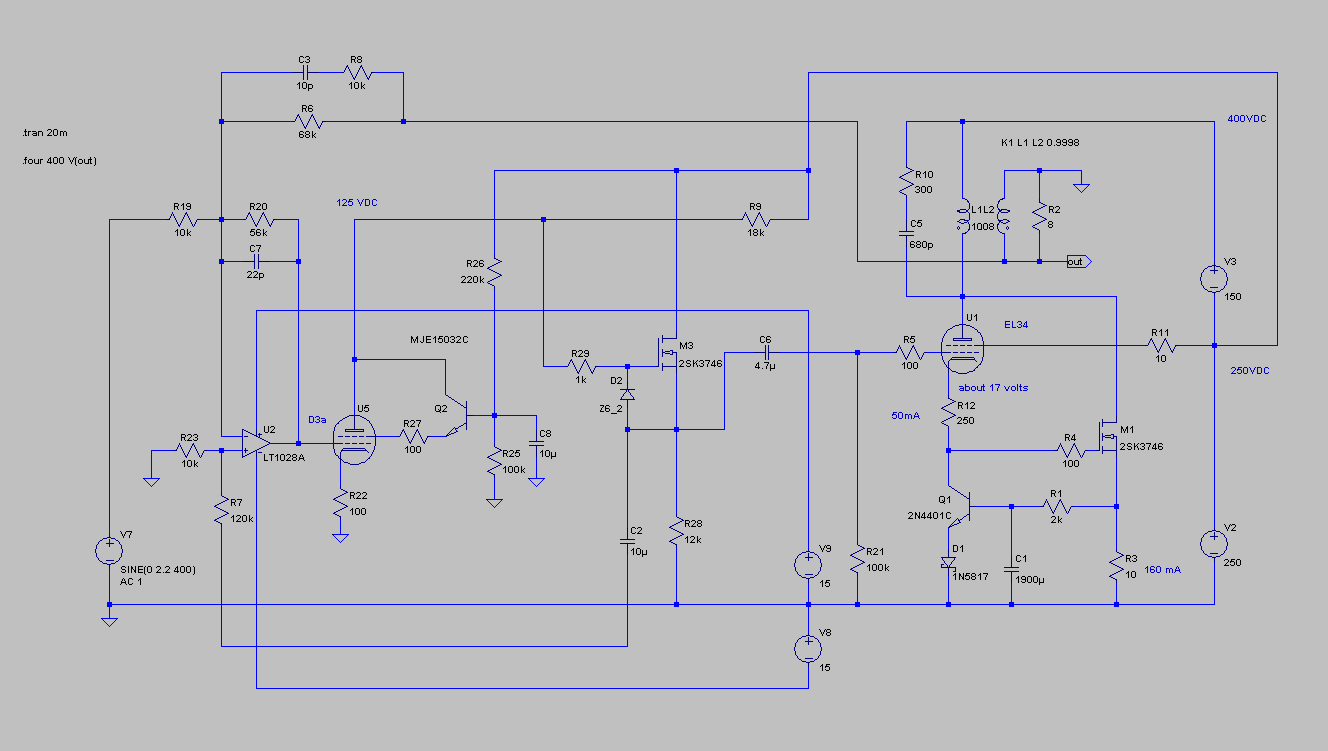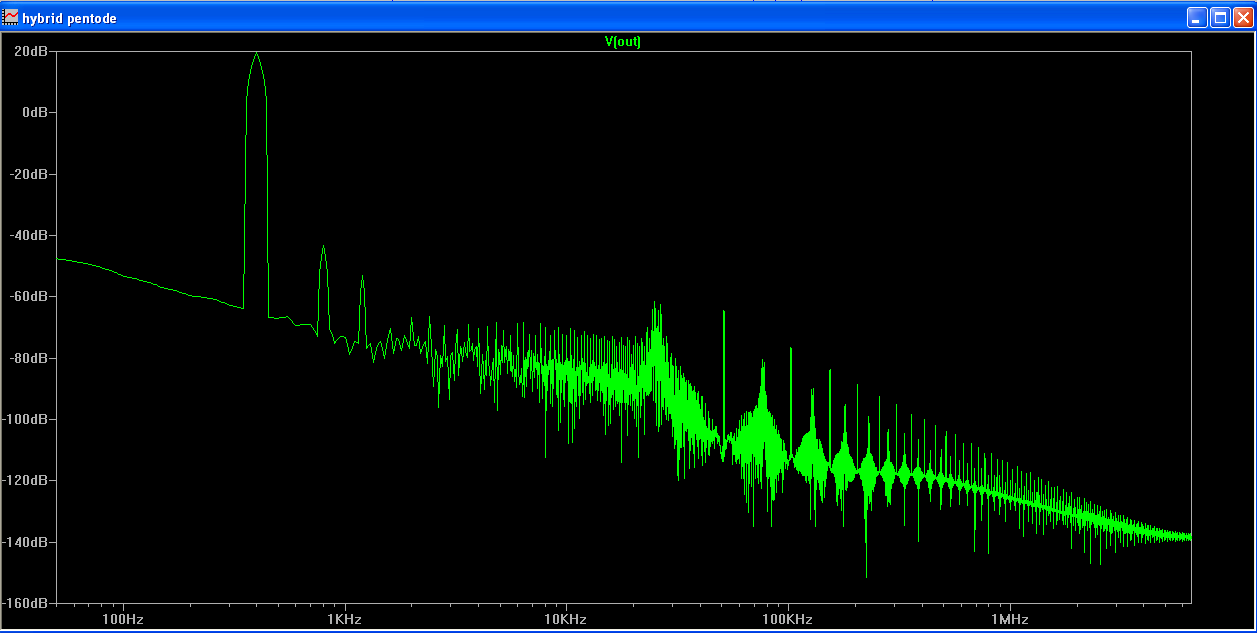just a quickie… and very much messing around.
considering the back and forth over “super triode” with John Broskie, whom i deeply respect, it occurred to me he might feel a bit “appropriated”, which i promise is absolutely not the case. i am not making any “super triode” circuits. what we (stefano bae and i) came up with is related to Broskie’s work. we just didn’t know when we did it. it is my determination, empirically measured and quantified, that it is not possible to make a quiet NMOS type “super triode” with a directly heated tube. not with regulated supplies and batteries on the heater… no. perhaps John can, but not yet. not with the circuits he’s posted so far. and because we aren’t particularly interested in hybrid-indirectly heated power tubes, we gave up! and we do our own thing…
however, in the spirit of collaboration, i offer the “super pentode”, which he clearly hasn’t come up with yet. it is very hard to beat that guy to the punch. but here it is…
unlike the transconductance multiplier circuits and “super triode” circuits, i have not built this one yet. this is a simulation. i am sure it works… it’s too simple not to.
why? why a “super pentode”? well, i doubt a simpler “zen” (as in the nelson pass use of the word) style tube-hybrid power amplifier could be made? the open loop gain is just high enough, that even in a single stage arrangement with a step down transformer, it can easily make 10 watts into 8 ohms with a perfectly triode-like harmonic spectra. just add feedback. any typical line level input will make some nice noise with a 90dB/Watt @ 1 meter sensitive little speaker. it won’t get the neighbors to automatically call the police, but hey! a triode “super triode” circuit might require a bit more input… to drive a speaker through a step down tranny. also, why not a “super pentode”? the “super triode” might need some superior company!
and why not an EL-34? sure! one stage and a decent sensitivity. your “smart” phone could almost drive it to clipping.
for the output transformer, i guesstimated (love that word) a 1000 ohm primary impedance and 10H (for 200 – 250 mA “plate current”). a Lundahl 1627 will work perfectly here. there are certainly other possibilities, but i am sure this could be wired up and running in an afternoon. the 2SK3746 is one of my favorite high voltage MOS. Mouser has them. i use it as a pass element and as a current limiting device in my own voltage regulators. it’s a low capacitance device, once the drain voltage gets high enough. but any high voltage NMOS that you prefer should work…
one of Broskie’s simple current servos can be added in place of the morrison style “super triode” biasing arrangement to keep it from running away! here is the FFT simulation with 5 Vpeak input… a lovely thing, just before clipping. most typical line stages could drive this easily. roughly 10K input impedance.
here is the sim for the transient response: about 17 watts across 8 ohms. below is the peak to peak sine… note the inverted phase.
below is a freak sweep.
and here is the open loop gain…
a bit more work would be needed to flush this out, but i’m doing this for Broskie.
addendum
below is a more practical example of a really fucked up single ended EL34 hybrid. i am throwing the kitchen sink at this, much like john might. here you have a bridged feedback hybrid op amp/pentode (the D3a could be 6688, 7788, 6E6P without a change in socket… or many other pentodes depending). the pentode section is using Frank Blöhbaum’s brilliant “best pentode” circuit. you get a MOS buffer to drive a more sensible grid leak for the output stage (100k), and the possibility to use some electrolytic coupling caps (you don’t have to, it’s just fun to “tolchock”* convention). a mix of film and wet tantalum would be fabulous sounding between the driver and output stage. just because the wombats say you can’t, it’s imperative to shove it up they nose with a rubba hose. and the output stage a “super pentode” (hahahahah…). lots of super and best going on. note the servo for the MOS current is right out of Broskie’s playbook, probably the only thing he has done in this circuit. but he could have done the whole thing…! well, he hasn’t done much with signal pentodes yet. i took a bullet for the guy. (*Nadsat)
the gain is high so the nested feedback takes some doing. the leakage inductance of your particular output transformer will alter the compensation, so expect some work! i am using my own rough approximation of Lundahl’s LL1627. but undoubtedly worth it! you get a “triode” distortion spectra, and 10 watts at 0.08% THD into 8 ohms. lots of in your face good pentode madness here. and food for thought.
a simmed fft below. the trend is all that matters…







